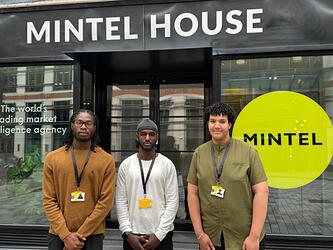Research vital to combat ‘hysteria’ around migration
The morning session at the event, which is taking place in London today and tomorrow, presented examples from research that shed light on an issue that often lacks clarity and information.
Bobby Duffy (pictured) of Ipsos MORI’s Social Research Institute presented longitudinal research looking at the changing attitudes and influences towards migration over a period of around 10 years. He discussed four myths and realities that are typically related to the issue, along with research that addressed each one:
1 ) MYTH: The media created concern around immigration
Ipsos MORI’s longitudinal research shows that a rise in migration preceded news coverage and public concern. Further to this, while in 2004 the biggest predictor of being concerned about immigration was Daily Mail readership, in 2014 it was voting UKIP.
2 ) FACT: The public overestimate the scale of immigration
When asked to estimate the percentage of the immigrants within the population, people in the UK estimated 25%, when the reality is 12%. Those in the US estimated 33%; the reality is 14%.
It’s difficult, said Duffy, to isolate the cause and effect of this: emotional innumeracy can have an impact, where people want to be accurate with their answers but also want to use their estimate to send a message regarding their concerns on the issue. Generation Y is least likely to be worried, and also most likely to overestimate, Duffy said.
3 ) MYTH: The issue of immigration is fused with concerns around Europe
Research shows, says Duffy, that while immigration is a key factor for those wanting to leave the EU, it is far from the only driver.
4 ) MYTH: We weren't talking enough about immigration before, and people are happier now we are
Comparing attitudinal data in 2011 and 2015, said Duffy, the biggest shift was actually the growth in people thinking it was being talked about too much. Though there is still a large contingent who believe it’s not being talked about enough (many of these are UKIP voters).
Following Duffy, Carryn Smit of TNS’ Global Brand Equity Centre in South Africa demonstrated, using findings from social media research, how groups and messages are becoming more polarised in the digital age. Looking at Twitter data from over 3m tweets over the course of 105 days, many conversational trends emerged around the US presidential election and the UK’s ‘Brexit’ discussions.
Conversational and community-based ‘bubbles’ were observed, with little communication between them. This, said Smit, represented the fact that the algorithms that digital technology relies on to deliver information to people that will resonate with their existing views, results in ‘filter bubbles'; that is, we are only exposed to the views that we already hold, and not those that contradict or question them.
This serves to isolate and segregate views and communities even further.

We hope you enjoyed this article.
Research Live is published by MRS.
The Market Research Society (MRS) exists to promote and protect the research sector, showcasing how research delivers impact for businesses and government.
Members of MRS enjoy many benefits including tailoured policy guidance, discounts on training and conferences, and access to member-only content.
For example, there's an archive of winning case studies from over a decade of MRS Awards.
Find out more about the benefits of joining MRS here.














0 Comments